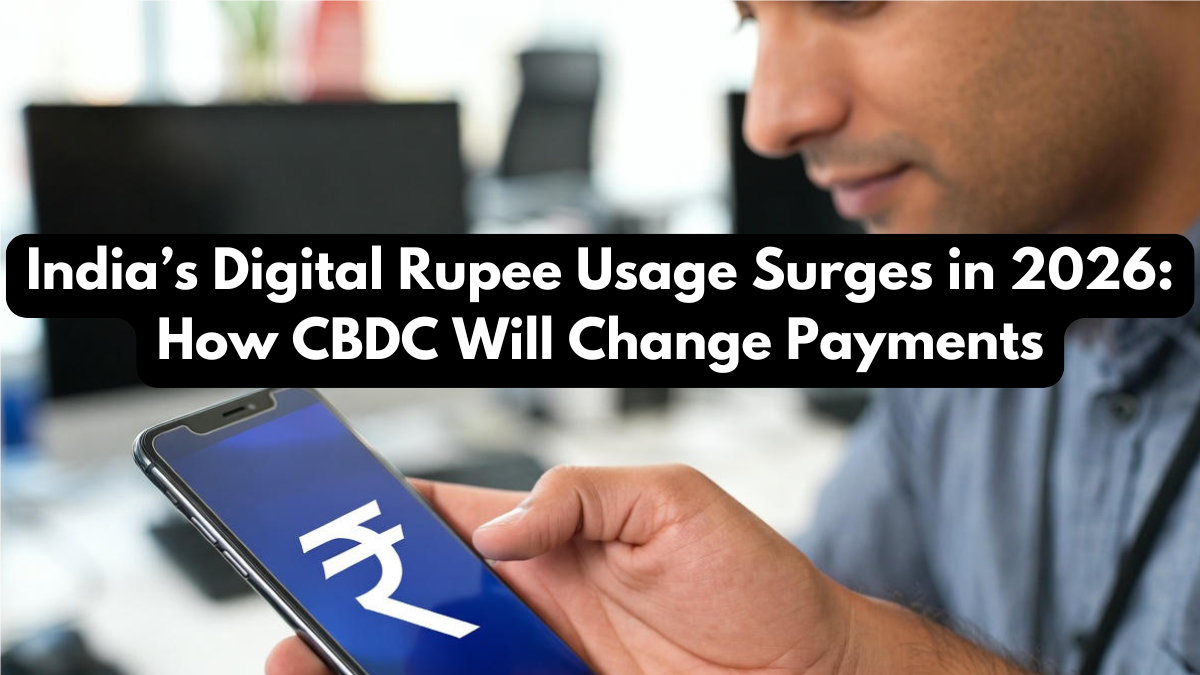The year 2026 marks a major shift in the nation’s financial landscape as Digital Rupee India adoption reaches record highs across cities and rural regions. This transformation is driven by rapid technological growth, contactless payment culture, and the government’s push for transparent digital transactions. The rise of CBDC India has simplified how people pay, save, and secure money without relying on physical cash. Businesses, banks, students, and everyday users are now embracing the digital rupee for faster transactions and enhanced financial security. With new updates rolling out in 2026, the Digital Rupee is poised to become a key part of India’s modern economy.

Why Digital Rupee India Is Growing in 2026
There are several reasons behind the rapid expansion of Digital Rupee India. One major factor is the government’s mission to promote cashless payments and curb fraudulent transactions. Since CBDC India is directly issued by the Reserve Bank of India (RBI), users prefer it over other digital wallets due to its authenticity and security. The digital rupee also supports instant transfers, even during bank holidays, making it highly dependable.
Another reason is the ease of using the digital rupee across e-commerce platforms, local stores, public transport, and utility services. As UPI and digital wallets continue to grow, the integration of CBDC India has created a seamless payment experience for millions. The government has also partnered with private banks and fintech companies to accelerate adoption nationwide.
Key Features of Digital Rupee India
The success of Digital Rupee India lies in its advanced features designed to enhance transparency and convenience. From secure ledger systems to offline payments, CBDC India is built for high reliability. In 2026, new RBI updates introduced enhanced user privacy protections and transaction speed improvements, making digital payments more efficient.
Below is a table outlining major features of the digital rupee:
| Feature | Description | Benefit |
|---|---|---|
| RBI Backed | Issued and controlled by RBI | High trust and stability |
| Instant Transfers | Lightning-fast payments | Saves time for users |
| Offline Mode | Works without internet | Useful in rural areas |
| High Encryption | Secure and tamper-proof | Reduces fraud |
| Cross-Platform Usage | Works with banks & apps | Easy accessibility |
| Low Transaction Fees | Minimal charges | Cost-effective |
These features highlight how CBDC India provides users with a safe and efficient currency system suitable for modern needs.
How CBDC India Is Changing Payments
The rise of CBDC India is revolutionizing how people conduct everyday transactions. Merchants now accept digital rupee payments using QR codes, while banks integrate the currency into their mobile apps. With Digital Rupee India, users receive direct bank-backed digital money, eliminating third-party dependencies. This shift reduces payment delays and offers full transparency between banks and customers.
Moreover, digital rupee wallets have become popular among students, travelers, and small business owners who prefer a hassle-free payment experience. International companies operating in India are also incorporating CBDC India into payroll systems to provide seamless transactions. As more sectors adopt digital payments, the digital rupee becomes a central component of India’s economic modernization.
Impact on Businesses and Everyday Users
Businesses benefit greatly from Digital Rupee India because it reduces cash handling costs, simplifies bookkeeping, and enables quicker settlements. Retail stores and online sellers appreciate the transparency and lower transaction fees offered by CBDC India. For everyday users, the digital rupee brings enhanced security, especially in reducing counterfeit currency risks.
Rural communities also experience significant advantages, as the Digital Rupee supports offline transactions. This makes Digital Rupee India accessible even in areas with weak internet connections. Users also enjoy instant refunds, smooth bill payments, and faster salary disbursements.
Conclusion
The rapid expansion of Digital Rupee India in 2026 marks the beginning of a digital-first financial ecosystem. As CBDC India continues to evolve, it promises more transparency, stability, and convenience for both consumers and businesses. India’s transition to the Digital Rupee signals a significant step toward a technologically advanced economy. With strong government support and growing user trust, the digital rupee is set to become the backbone of the country’s future payments landscape.
FAQ
What is the Digital Rupee India?
It is a digital form of currency issued and regulated by the Reserve Bank of India.
How does CBDC India differ from digital wallets?
CBDC India is official RBI-backed currency, whereas wallets store digital money but do not issue it.
Can Digital Rupee India be used offline?
Yes, it supports offline transactions for rural and low-connectivity areas.
Is the digital rupee safe?
Yes, it uses strong encryption and secure RBI-backed systems.
Will CBDC India replace physical cash?
Not immediately, but its usage will continue to grow alongside traditional currency.
Click here to know more.